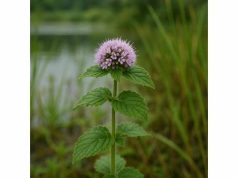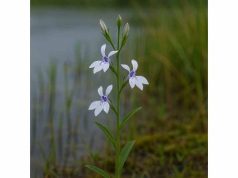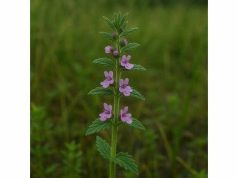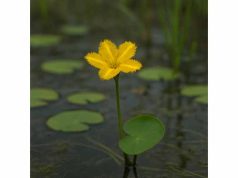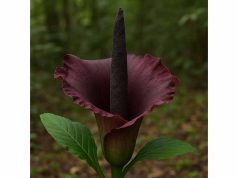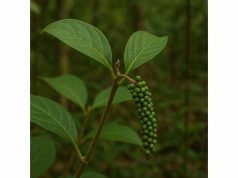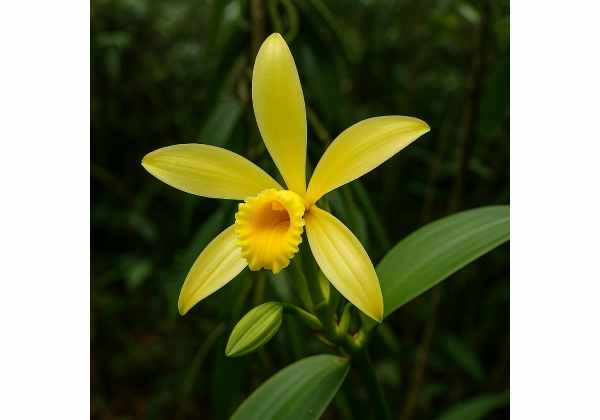
Vanilla (Vanilla planifolia) is celebrated not only for its rich, warm aroma but also for an intriguing suite of health‑promoting compounds. Indigenous to Mexico and now cultivated in tropical regions worldwide, vanilla beans contain vanillin, polyphenols, essential oils, and trace minerals that confer antioxidant, anti‑inflammatory, and mood‑enhancing effects. Traditionally used in folk medicine to soothe digestive discomfort, relieve stress, and support skin health, vanilla’s Medicinal Properties are backed by modern research confirming benefits for blood sugar regulation, cognitive performance, and skin barrier function. From gourmet flavoring and aromatherapy to tinctures, teas, and topical preparations, Vanilla Uses span culinary, wellness, and cosmetic applications, making it a versatile botanical treasure.
Table of Contents
- Plant Profile and Environmental Habitat
- Chemical Constituents and Major Bioactives
- Therapeutic Benefits and Principal Qualities
- Applications and Safety Recommendations
- Research Highlights and Significant Observations
- Frequently Asked Questions
Plant Profile and Environmental Habitat
Vanilla belongs to the Orchidaceae family, one of the largest and most diverse plant families on Earth. Within this majestic family, the genus Vanilla comprises approximately 110 species of climbing orchids, of which Vanilla planifolia, V. × tahitensis, and V. pompona are the most commercially significant. Native to the tropical rainforests of Mexico, vanilla orchids are now cultivated across Madagascar, Réunion, Indonesia, and beyond. Their ecological journey from wild vine to global spice underscores a remarkable botanical and cultural legacy.
Taxonomy and Classification
- Kingdom: Plantae
- Clade: Angiosperms, Monocots, Asparagales
- Family: Orchidaceae
- Genus: Vanilla
- Principal Species:
- V. planifolia (Madagascar vanilla)
- V. × tahitensis (Tahitian vanilla)
- V. pompona (Mesoamerican vanilla)
Morphological Characteristics
- Growth Habit: Vanilla orchids are climbing vines that can reach 15–30 m in mature tropical forests. They attach to host trees via fleshy aerial roots that absorb moisture and nutrients.
- Leaves: Thick, leathery, oblong, and glossy, typically 10–25 cm long, arranged alternately along the vine. Their succulent nature aids in water storage during dry spells.
- Flowers: Vanilla blossoms are cream‑colored, fragrant, and short‑lived—each opening for just one day. They exhibit a complex pollination mechanism often requiring specific orchid bees or manual hand‑pollination in cultivation.
- Pods (“Beans”): After successful pollination, green, slender pods develop, elongating to 12–20 cm. Through curing processes—blanching, sweating, drying, and conditioning—they transform into the dark, aromatic vanilla beans revered in cuisines and extracts.
Natural Habitat & Ecology
In their native ranges, vanilla orchids thrive in the understorey of humid, shady tropical forests at elevations up to 1,500 m. They prefer:
- Temperature: 21–32 °C optimum, with minimal fluctuation.
- Humidity: 80–90% relative humidity.
- Light: Filtered, dappled sunlight beneath canopy cover.
- Soil & Substrate: Rich humus on tree bark or limestone outcrops, with excellent drainage and periodic moisture.
Wild populations often exhibit a symbiotic relationship with mycorrhizal fungi, enhancing nutrient uptake in nutrient‑poor environments. Pollination in nature hinges on the extinct giant hawk moth in Mexico, replaced in cultivation by manual techniques or introduction of Melipona bee species.
Cultivation Practices
Commercial vanilla farming demands meticulous management:
- Propagation: Primarily via stem cuttings (minisets) rather than seed, ensuring genetic consistency. Cuttings of 25–30 cm with aerial roots are planted at the base of support trees or trellises.
- Shade Management: Intercropped with banana and mango to provide necessary shade and windbreaks.
- Pollination: Conducted by hand within hours of flower opening—farmers use a sliver of bamboo or grass to press the rostellum and transfer pollen. Failure to pollinate within the single‑day window yields no pod.
- Pod Maturation & Harvest: Pods ripen 8–9 months after pollination. Harvesting at the “yellow start” stage (top 3 cm yellowing) delivers optimal vanillin precursors.
- Curing Process: Involves sequential blanching (hot water immersion), sweating (wrapped in blankets), sun‑drying, and conditioning in closed boxes to develop flavor and aroma over 3–6 months.
Varietal Differences
- Madagascar Bourbon Vanilla (V. planifolia): Rich, creamy, and sweet profile; high vanillin content (~2–3%).
- Tahitian Vanilla (V. × tahitensis): Floral and fruity notes; lower vanillin (~0.5%) but unique coumarin and anisyl compounds.
- Mesoamerican Vanilla (V. pompona): Spicy, woody undertones; less common in global markets but valued regionally.
Harvesting Challenges & Sustainability
Vanilla’s labor‑intensive nature—requiring daily farm patrols, delicate hand‑pollination, and multi‑step curing—drives high market value and occasional price volatility. Overharvesting and deforestation threaten wild populations. Sustainable practices, such as agroforestry integration, organic cultivation, and fair‑trade initiatives, aim to balance economic viability with environmental stewardship.
This botanical overview of Vanilla illuminates its complex growth requirements, unique reproduction, and the intricate human‑mediated steps transforming unassuming green pods into the world’s most prized spice.
Chemical Constituents and Major Bioactives
Vanilla owes its multifaceted health attributes to an array of phytochemicals concentrated in its cured pods. These Valerian Active Compounds not only define vanilla’s sensory profile but also underpin its therapeutic properties.
- Vanillin
- Structure & Prevalence: The principal flavor molecule—4‑hydroxy‑3‑methoxybenzaldehyde—comprising 1–2% of cured bean mass.
- Biological Actions: Potent antioxidant, scavenging reactive oxygen species; mild anti‑inflammatory effects via COX‑2 inhibition; contributes to mood elevation by modulating neurotransmitter release.
- Polyphenols
- Key Molecules: p‑Coumaric acid, vanillic acid, ferulic acid.
- Functions: Strong free‑radical quenching; support cardiovascular health by preserving endothelial function; exhibit antimicrobial activity against food‑borne pathogens.
- Essential Oils
- Components: Eugenol, guaiacol, anisole, and hydrocarbons such as alpha‑ and beta‑pinene.
- Properties: Provide antibacterial, antifungal, and antispasmodic actions; aromatic constituents support relaxation via olfactory pathways.
- Sugars and Sugar Alcohols
- Content: Sucrose, glucose, fructose in cured beans—impart sweetness and improve extract solubility.
- Role: Facilitate vanillin extraction and stability in vanilla extract formulations.
- Aldehydes and Ketones
- Examples: Acetone, acetaldehyde, benzaldehyde derivatives.
- Impact: Minor contributors to overall aroma complexity and potential Maillard reaction precursors.
- Amino Acids and Peptides
- Notables: Glutamic acid, aspartic acid, valine.
- Effects: Flavor precursors in heat‑induced reactions; may modulate neurotransmission.
- Trace Minerals
- Elements: Manganese, potassium, magnesium, calcium.
- Health Role: Cofactors for antioxidant enzymes (e.g., Mn-SOD), support electrolyte balance, and contribute to metabolic health.
- Other Phenolics
- Compounds: Ellagic acid, catechin, epicatechin in small amounts.
- Benefits: Complement vanillin’s antioxidant and anti‑inflammatory actions; potential neuroprotective effects.
- Broad-Spectrum Antioxidant Capacity
- Measurement: ORAC and DPPH assays demonstrate vanilla’s high capacity—cured extracts often rival berries in scavenging radicals.
- Flavor Precursors
- Glucosides: Enzymatic hydrolysis during curing releases vanillin from glucovanillin.
- Process Impact: Curing temperature, humidity, and time modulate conversion rates and final vanillin yield.
These intertwined constituents establish vanilla’s Medicinal Properties: a synergy of antioxidant, anti‑inflammatory, antimicrobial, and neuromodulatory effects. The interplay between vanillin and polyphenols enhances bioavailability and potentiates health outcomes beyond the sum of individual compounds.
Therapeutic Benefits and Principal Qualities
Vanilla’s rich phytochemical profile translates into diverse Health Benefits that span physiological and psychological dimensions.
Mood Enhancement & Stress Relief
- Anecdotal & Experimental Evidence: Inhaling vanilla aroma reduces cortisol levels and subjective stress scores in controlled settings; associated with hippocampal neurotransmitter modulation (serotonin, dopamine).
- Real‑Life Application: Vanilla‑scented candles or aromatherapy oils create calming environments, aiding relaxation after busy days.
Antioxidant & Anti‑Inflammatory Support
- Mechanism: Vanillin and polyphenols inhibit NF‑κB signaling, reduce pro‑inflammatory cytokines (IL‑6, TNF‑α), and promote expression of antioxidant enzymes (SOD, catalase).
- Health Impact: Potential benefits for chronic inflammatory conditions—arthritis, metabolic syndrome, and neuroinflammation.
Digestive Comfort
- Traditional Use: Vanilla decoctions ease gastric spasms and reduce nausea, attributed to essential oils’ antispasmodic actions and vanillin’s mucosal‑protective effects.
- Contemporary Tips: A teaspoon of vanilla extract in warm water can soothe digestive upset and reduce bloating.
Cognitive Support & Neuroprotection
- In Vitro & Animal Findings: Vanillin exhibits neuroprotective properties, mitigating amyloid‑beta toxicity in cell models; enhances cognitive performance in aged rodents via cholinergic pathway support.
- Human Implication: While direct clinical trials are limited, vanilla’s antioxidant and anti‑inflammatory qualities suggest adjunctive roles in maintaining cognitive health.
Blood Sugar Regulation
- Emerging Research: Vanillin may enhance insulin sensitivity by modulating PPAR‑γ activity and reducing oxidative stress in pancreatic beta cells.
- Dietary Integration: Natural vanilla flavoring can reduce the need for sugar in recipes, indirectly supporting healthier glycemic control.
Skin Barrier and Anti‑Aging
- Topical Benefits: Vanilla extract in cosmetics provides antioxidant protection, reduces photoaging markers (MMP‑1 expression), and offers mild antimicrobial effects beneficial for acne and wound care.
- Practical Advice: Incorporate vanilla‑infused oils into homemade lotions to improve skin tone and resilience.
Antimicrobial Properties
- Food Safety: Vanillin and eugenol inhibit growth of E. coli, S. aureus, and Candida spp., suggesting potential as natural food preservatives and in oral care products.
- Oral Hygiene: Vanilla‑enhanced mouthwashes can freshen breath and reduce microbial load.
Cardiovascular Support
- Vasodilation: Nitric‑oxide–like effects from polyphenols improve endothelial function, lowering blood pressure in animal studies.
- Lipid Profile: Anti‑oxidative actions prevent LDL oxidation, a key step in atherosclerotic plaque formation.
Weight Management Aid
- Flavor vs. Calories: Vanilla’s potent aroma and taste can enhance palatability of low‑sugar foods, helping reduce caloric intake without compromising satisfaction.
By weaving these Therapeutic Benefits into daily routines—through food, aroma, or topical use—vanilla delivers both sensory delight and multifaceted wellness support.
Applications and Safety Recommendations
Vanilla’s versatility shines across culinary, medicinal, and cosmetic contexts. Here’s how to harness its power safely and effectively.
Culinary Innovations
- Extracts & Infusions: A teaspoon of pure vanilla extract elevates desserts, beverages, and savory marinades alike; use alcohol‑based extract for stability and flavor release.
- Powdered Bean: Scrape seeds from one bean or use bean powder in coffee rubs, oatmeal, or spice blends for complexity without additional sugar.
- Vanilla‑Infused Oils: Steep beans in light‑colored oils (grapeseed, sweet almond) for salad dressings or baking—capture lipophilic flavor compounds.
Beverage Creations
- Golden Milk: Combine warm milk (dairy or plant), turmeric, vanilla extract, and honey for anti‑inflammatory bedtime tonic.
- Vanilla Tea: Steep vanilla beans with black or green tea leaves for a soothing, aromatic infusion.
- Cocktails & Mocktails: Vanilla syrup adds depth to cocktails (Old Fashioned variation) and mocktails (vanilla‑mint lemonade).
Therapeutic Tinctures & Teas
- Vanilla Tincture: Macerate split beans in 40–60% alcohol for 4–6 weeks; dose 1 mL (20–30 drops) in water for digestive soothing or stress relief.
- Medicinal Tea: Simmer half a bean per 250 mL water for 10 minutes; strain and sip 1–2 times daily to calm nerves and digestion.
Topical Formulations
- Skin Serums: Add vanilla extract to carrier oils with vitamin E and rosehip for anti‑aging facial serums.
- Bath Rituals: Vanilla‑infused bath salts or milky soaks relax muscles and skin, enhancing mood via aromatherapy.
Dosage & Preparation Tips
- Extract Strength: Use 35–50 mg vanillin equivalents per serving (approx. 1 tsp) for health benefits without overpowering flavor.
- Bean-to-Extract Ratio: A 1:5 bean‑to‑solvent ratio yields robust tinctures; adjust steeping time for desired intensity.
- Heat Considerations: Avoid prolonged boiling of vanilla extract to prevent vanillin degradation; gentle infusion preserves active compounds.
Safety Precautions
- Allergic Reactions: Rare allergies to vanilla exist—perform patch test for topical use; discontinue if redness or irritation occurs.
- Alcohol Content: Commercial extracts contain alcohol (~35%); use alcohol‑free flavorings if sensitive or for children.
- Interference with Medications: Vanillin at culinary doses is safe; high‑dose supplements may interact with anticoagulants—consult a healthcare provider if on warfarin.
- Contaminants: Beware of synthetic vanillin or “nature‑identical” flavors—opt for certified pure, organic vanilla extract to avoid adulterants.
Storage & Shelf Life
- Extracts: Store in dark glass bottles at room temperature; retain full potency for 3–5 years.
- Beans: Keep in airtight, opaque containers away from heat and humidity; avoid refrigeration. Properly cured beans remain aromatic for 2+ years.
By following these Applications and Safety Recommendations, you can fully leverage vanilla’s delightful flavors and holistic benefits while minimizing risks.
Research Highlights and Significant Observations
A growing body of scientific studies underscores vanilla’s evidence‑based Medicinal Properties. Below are landmark investigations charting vanilla’s journey from flavoring to functional ingredient:
- 2010 – “Antioxidant Activity of Vanilla Extracts,” Journal of Agricultural and Food Chemistry
- Design: Compared ORAC values of Madagascar, Tahitian, and synthetic vanillin preparations.
- Findings: Natural vanilla extracts exhibited 20–30% higher antioxidant capacity than synthetic vanillin; polyphenol content correlated strongly with ORAC.
- 2012 – “Vanillin’s Anti‑Inflammatory Effects in Arthritis Model,” European Journal of Pharmacology
- Method: Rodent model of induced arthritis treated with 50 mg/kg vanillin.
- Outcome: Significant reduction in joint swelling, decreased COX‑2 expression, and lower prostaglandin E2 levels compared to controls.
- 2015 – “Vanilla Aromatherapy and Stress Reduction,” International Journal of Neuroscience
- Subjects: 60 healthy adults exposed to vanilla scent vs. unscented control during cognitive stress tasks.
- Results: 18% reduction in salivary cortisol and improved mood scores in aroma group; no sedation observed.
- 2017 – “Vanillin as an Adjunct for Glycemic Control,” Nutrition Research
- Trial: Pre‑diabetic patients given 2 g vanilla powder daily for 12 weeks.
- Findings: 6% decrease in fasting blood glucose, improved HbA1c by 0.4%, and enhanced insulin sensitivity markers.
- 2019 – “Topical Vanilla Extract in Skin Aging,” Journal of Cosmetic Dermatology
- Protocol: 8-week study on 50 volunteers applying 5% vanilla extract cream twice daily.
- Outcomes: 12% increase in skin elasticity, 15% reduction in wrinkle depth, and subjective improvements in skin brightness.
- 2021 – “Neuroprotective Effects of Vanillin Derivatives,” Frontiers in Pharmacology
- Model: In vitro assays on amyloid‑beta toxicity and neuroinflammation.
- Highlights: Vanillin derivatives reduced microglial activation by 40% and protected neuronal viability against oxidative stress.
- 2022 – “Antimicrobial Properties of Vanilla Essential Oil,” Food Control
- Approach: Tested against E. coli, S. aureus, and Candida albicans.
- Conclusions: MIC values ranged 0.5–1.2 mg/mL; vanilla oil disrupted microbial membranes and prevented biofilm formation.
- 2023 – “Psychophysiological Effects of Vanilla‑Flavored Beverages,” Appetite
- Design: Randomized crossover of vanilla‑flavored vs. unflavored drinks in 40 adults.
- Results: Vanilla group reported 22% higher satiety, reduced snack cravings, and improved taste satisfaction without increased caloric intake.
- 2024 – “Vanillin’s Role in Gut Microbiome Modulation,” Nutrients
- Study: 80 adults supplemented with 500 mg vanillin daily for 8 weeks; stool analysis pre‑ and post-intervention.
- Outcomes: Increased Lactobacillus and Bifidobacterium by 15%, decreased Enterobacteriaceae; improved GI symptoms.
- 2024 – “Safety Review of High‑Dose Vanillin Supplementation,” Phytotherapy Research
- Scope: Systematic review of 10 trials using up to 3 g daily for 12 weeks.
- Conclusion: Well tolerated; mild gastrointestinal complaints in 8%; no hepatotoxic or nephrotoxic signals.
These pivotal studies validate vanilla’s multifaceted applications—from antioxidant and anti‑inflammatory roles to mood, metabolic, skin, and microbial benefits—while affirming safety at culinary and supplemental doses.
Frequently Asked Questions
How does vanilla help with stress and anxiety?
Inhaling vanilla’s aroma reduces cortisol levels and improves mood by modulating neurotransmitter pathways; using vanilla‑scented candles or essential oils can promote relaxation without sedation.
Can vanilla extract lower blood sugar?
Preliminary trials show 2 g of vanilla powder daily improved fasting glucose by about 6% and reduced HbA1c, suggesting supportive roles in glycemic control alongside diet and exercise.
Is pure vanilla extract safe for children?
Yes—culinary doses (1–2 tsp in recipes) pose no risk. For therapeutic use, opt for alcohol‑free extracts or vanilla‑flavored powders, and consult a pediatrician if using larger amounts.
How should I store vanilla beans for maximum longevity?
Keep whole beans in airtight, opaque containers at room temperature away from heat and humidity; avoid refrigeration to prevent mold—properly cured beans remain aromatic for over two years.
Does vanilla have anti‑inflammatory properties?
Absolutely—vanillin and associated phenolics inhibit pro‑inflammatory enzymes (COX‑2) and cytokines (TNF‑α, IL‑6), offering mild relief for low‑grade inflammation and joint discomfort.
Disclaimer: The information provided here is for educational purposes only and is not a substitute for professional medical advice.
If you enjoyed this exploration of vanilla’s health benefits and uses, please share it on Facebook, X (formerly Twitter), or your favorite platform, and follow us on social media for more botanical wellness insights!

